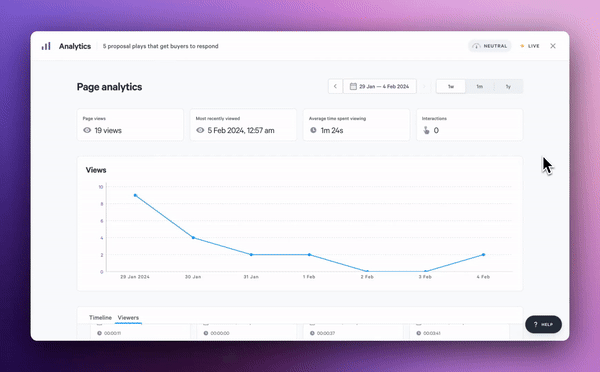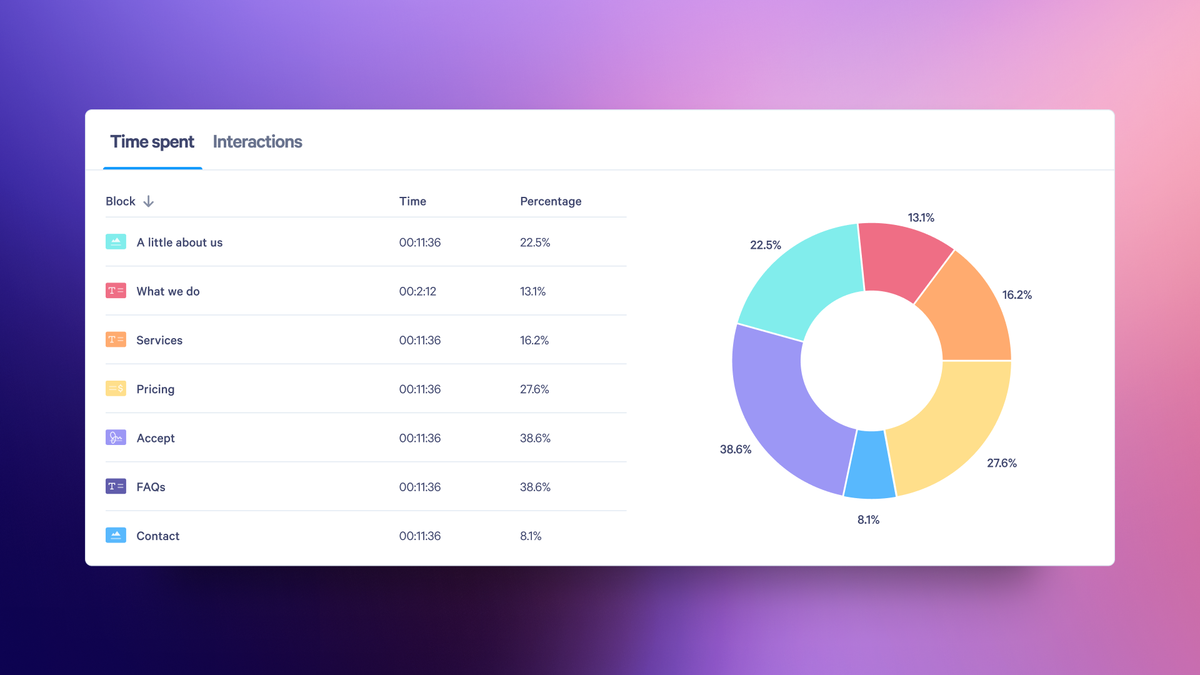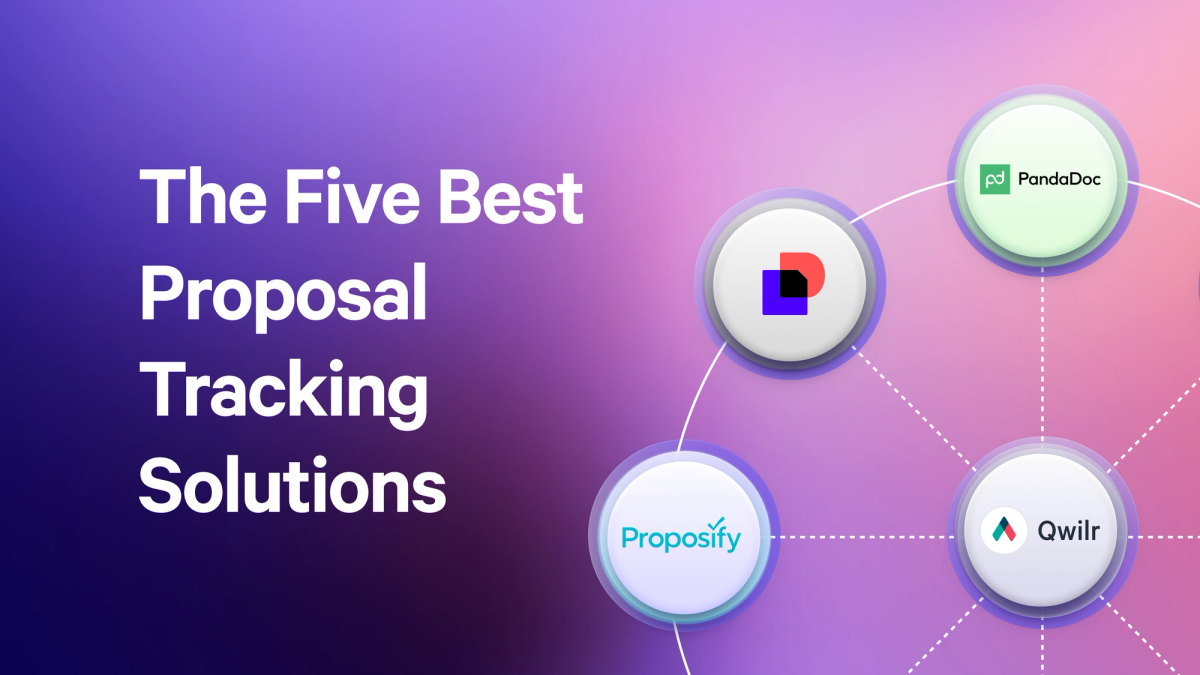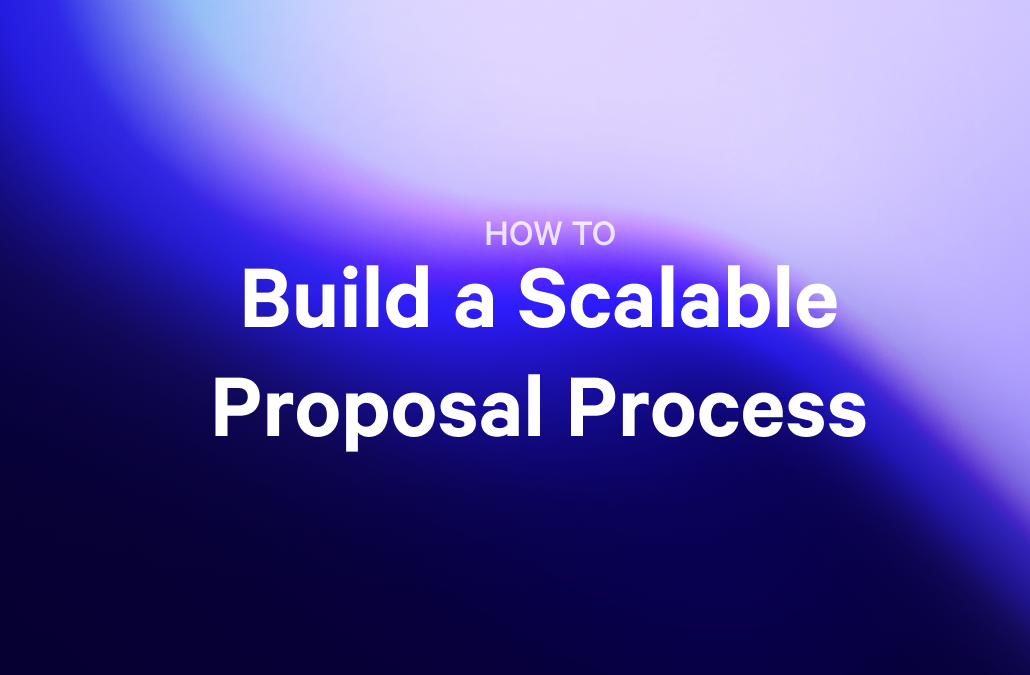You’ve had the perfect discovery call. The demo was a hit. The prospect is excited and asks you to send over a proposal. You craft the perfect document, hit send, and then… silence.
Welcome to the sales black box. It’s the frustrating gap between sending your most important document and knowing what happens next. Did they open it? Did they share it with the CFO? Did they get stuck on the pricing page? Without answers, your follow-up is just a shot in the dark.
While most sales teams track metrics like conversion rates and sales cycle length, they often miss the granular data that explains why those metrics are what they are. Document analytics is the practice of tracking and analyzing how prospects interact with your sales documents. It shines a light into the black box, turning your proposals and quotes from static files into sources of powerful buyer intelligence.
Why traditional sales analytics tells an incomplete story
Modern sales teams are swimming in data. We track pipeline health, deal conversion rates, and sales cycle length to understand performance and forecast revenue. These metrics are essential for understanding the big picture—the what. They tell you a deal stalled or that your average close time is increasing.
But they don’t tell you why.
Was the deal lost because your pricing was too high? Or did your proposal never even make it past your champion to the actual decision-maker? Traditional analytics can’t answer these questions. This is where document analytics comes in, providing the behavioral context needed to understand the story behind the numbers.
It bridges the gap between sales activity and sales outcomes, showing you exactly how buyers engage with your solution at the most critical stage of their journey.
The key document metrics that reveal buyer intent
Once you start tracking sales document engagement, you move from guessing to knowing. These metrics aren't just vanity numbers; they are direct signals of buyer intent that can shape your entire sales strategy.
Here are the core metrics you should be tracking:
- Open rates and view notifications. This is the most fundamental signal. Knowing if and when your proposal is opened tells you if the deal is still alive. A real-time notification that a prospect is viewing your document is a powerful trigger to follow up when you’re top of mind.
- Time spent on each section. This is where the real insight lies. Are they spending five minutes on your pricing page? They’re likely giving it serious consideration. Did they breeze past your case studies? Maybe they aren’t relevant to their industry. This data helps you pinpoint areas of interest or confusion.
- Internal sharing and forwarding. B2B decisions are rarely made by one person. Seeing that your proposal has been viewed by multiple people—especially from different departments like finance or legal—is a strong indicator that the deal is moving forward. It shows your champion is actively selling on your behalf.
- Engagement with interactive elements. Did the prospect click to watch your embedded demo video? Did they use the interactive pricing calculator to model different scenarios? This kind of active engagement shows a much deeper level of interest than passively skimming a PDF.

How to turn document insights into closed deals
Collecting data is one thing; using it to close deals is another. Document analytics provides actionable insights that can directly improve core sales performance metrics like win rate and sales productivity.
Here’s how to put the data to work.
1. Prioritize your follow-ups with precision
Instead of working through a list of deals alphabetically, you can focus your energy where it matters most. A prospect who has opened your proposal three times in the last 24 hours and shared it with two colleagues is a much hotter lead than one who hasn't opened it at all. This data-driven prioritization ensures you spend your time on deals that are most likely to close.
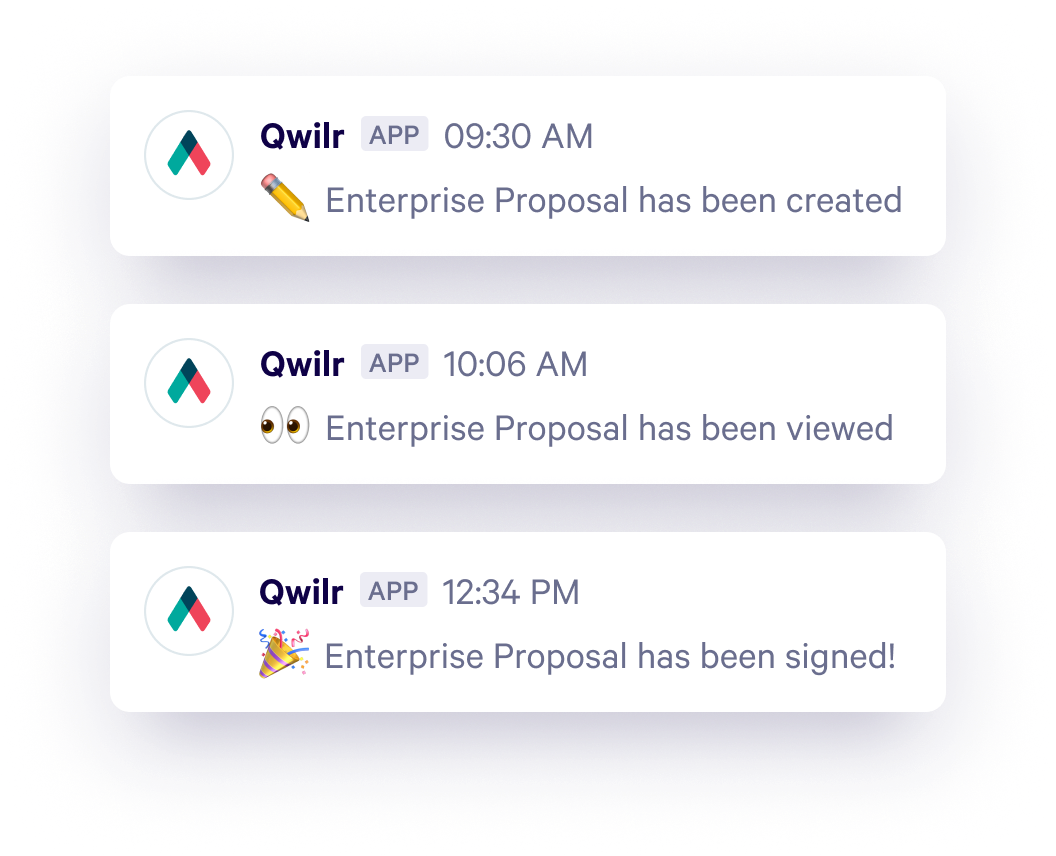
Get real-time notifications when prospects interact with your Qwilr proposals
2. Personalize your communication
Generic follow-up emails are easy to ignore. Document analytics allows you to be incredibly relevant.
- Instead of: “Just checking in on the proposal I sent.”
- Try: “I saw you spent some time on the implementation timeline. I thought you might find this case study on how we onboarded a similar team helpful.”
This approach shows you’re paying attention and adds value to the conversation, making you a trusted advisor rather than just another salesperson.
3. Forecast with more confidence
Deal health is often a gut feeling. Document analytics adds a layer of objective data to your forecasting. A deal with high engagement from multiple stakeholders is far more likely to close than one with minimal views.
We analyzed over one million proposals and found that proposals viewed by multiple stakeholders are almost twice as likely to be accepted.
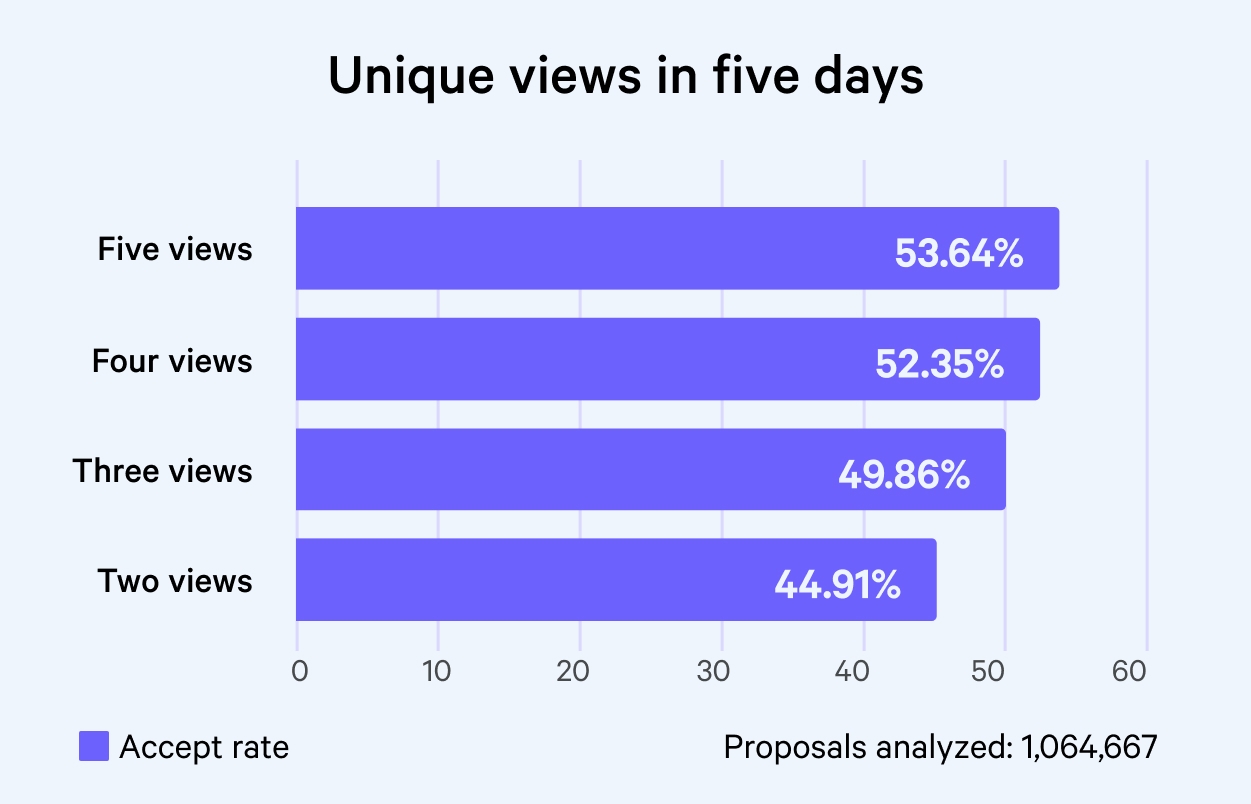
By tracking these engagement signals, you can more accurately predict which deals will move forward and identify at-risk opportunities before they go cold.
4. Refine your sales collateral
Your document analytics can also serve as a powerful feedback loop for your content. If you notice that prospects consistently skip a certain section or spend very little time on a page, it might be a sign that the content isn't resonating. Use these insights to continuously improve your templates, ensuring they are as effective as possible at communicating value.
Getting started with document analytics
You don’t need a team of data scientists to start leveraging document analytics. The easiest way to begin is by using a sales proposal tool that has analytics built right in.
Platforms like Qwilr are designed specifically for this. Instead of sending a static PDF, you create and share an interactive web-based proposal. From the moment you hit send, Qwilr starts tracking every interaction. You can see who viewed your page, what sections they focused on, how long they spent there, and if they shared it with others—all in real-time.
Because Qwilr integrates with CRMs like HubSpot and Salesforce, this rich engagement data can be automatically synced back to your contact and deal records. This enriches your existing sales data, giving your entire team a complete picture of buyer engagement without ever leaving your CRM.
Selling smarter, not just harder
The most successful sales teams are the ones who best understand their buyers. Document analytics provides a crucial window into the buyer's decision-making process at a stage where sellers have traditionally been blind.
It’s not about spying on your prospects. It’s about being more informed, relevant, and helpful. By understanding how your buyers engage with your most important content, you can tailor your approach, anticipate their needs, and guide them more effectively toward a decision. You stop guessing and start selling with intelligence.
